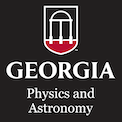Colloidal semiconductor nanocrystals have been of interest in aspects of fundamental understandings and applications such as light emitting diodes, lasers, photovoltaic cells, biomedical tags and solar cells. The optical and electronic properties of CdSe quantum dots (QDs) show a strong size and shape dependence. QDs have a high ratio of surface to volume and the surface of QDs prepared with a chemical method has a complex condition due to organic ligands. Therefore, the complex surface condition of colloidal QDs plays an important role in determining quantum yield (QY), carrier relaxation, and recombination process. The asymmetric crystal field and electron-hole exchange interaction in CdSe splits the lowest exciton state, (1se-1sh2/3), into five levels which includes the ‘dark’ and ‘bright’ exciton states. CdSe QDs are synthesized in wurtzite structure using the chemical colloidal method in this study. The optical modal gain enhancement of CdSe QDs is observed in a cylindrical glass-waveguide by using a variable stripe length method. CdSe QDs are prepared as having various surface conditions, which induces QY to be changed. The time resolved spectra show two different energy relaxation processes, a fast process of electron hole combination and a slow process involved with surface states. The ratio of slow to fast processes increases as the QY increases, which reveals that the surface related emission contributes to high QY of QDs. The photoluminescence and time resolved spectra are obtained over a broad temperature range (4 ~ 300K). The dark and bright exciton states are observed at a low temperature regime.
Events Calendar View
-
Departmental Colloquium
Mar 20, 2014
Photophysical properties and applications of CdSe quantum dots.
-
Mathematical Physics Seminar
Mar 25, 2014
Kerr solution for a rotating black hole, cont.
-
Departmental Colloquium
Mar 27, 2014
Towards accurate quantum dynamics of macromolecular systems on classical and quantum computers
While the past decade has seen tremendous advances in (classical) computing technologies (CPUs, GPUs, accelerators), in methodologies for molecular electronic structure, and in accurate representation of high-dimensional molecular potential energy surfaces, comparable advances in quantum dynamics computation have generally lagged. Likewise, advances in quantum computing hardware have motivated development of quantum simulation algorithms for molecular structure problems, but less so for dynamics applications. In the first half of this talk, I'll review the current status of inelastic and reactive scattering calculations for high-dimensional molecular systems on classical computers focusing on methods and size limitations for practical calculations. In the second half, the single excitation subspace (SES) approach to quantum simulation will be introduced as applied to the time-dependent Schroedinger equation [1,2]. Demonstrations of the method will be given for simulations of simple atom-atom collision systems as envisioned on large networks of coupled superconducting quantum computing devices. Resource estimation comparisons between classical computations and SES simulations will be addressed as well as the prospects for performing quantum simulations of macromolecular systems, highlighting the largest systems computable today on classical devices.
-
NanoSEC Seminar
Mar 28, 2014
Shaping Nanomedicines for Cancer Applications
The Karathanasis Laboratory for Nanomedical Engineering focuses on translational cancer nanomedicine. Specifically, our research program exploit the engineerable nature of nanoparticle technology to develop clinically relevant therapeutic and imaging agents for hard-to-treat cancers based on the integration of nanotechnology, oncology, imaging science and cancer biology. Using robust in vitro, in silico and in vivo analyses, we study the relation between the physical characteristics of nanoparticles (size, shape, etc.) and the nanoparticle’s navigation through different biological processes to extract design parameters that improve the in vivo performance of nanoparticles. In addition to the development of contemporary therapeutic paradigms, our lab develops nanoparticle imaging agents for MRI, CT and molecular imaging to enable non-invasive in vivo interrogation at super-high resolutions and highly accurate diagnosis of disease.
-
Mathematical Physics Seminar
Apr 1, 2014
Decoherence and the Quantum To Classical Transition
-
Departmental Colloquium
Apr 3, 2014
Star Formation in Ultraluminous and Infrared Bright Galaxies
How stars and galaxies form and evolve is one of the fundamental questions in the field of astrophysics. Star formation in the early Universe occurred at a higher rate than the present day and often in extremely dusty environments. The brightest galaxies are known as ultraluminous galaxies and are the product of galaxy mergers. These galaxies are hidden to optical telescopes and require observations in the infrared/sub-millimeter range. ZEUS-2 is the second generation Redshift (Z) and Early Universe Spectrometer (P.I. Gordon Stacey, Cornell University). It is designed to study star formation in galaxies from their birth in the early Universe around 12-billion years ago, through to the present day. In the “local” universe (z < 0.1) ZEUS-2 targets the warm molecular gas cooling lines of 12CO(J=8-7, 7-6, and 6-5), and 13CO(6-5) and the neutral atomic carbon lines [CI] 370 micron and 610 micron. In the early universe (z>1) the telluric windows correspond to the redshifted fine structure lines of [CII] 158 micron, [OIII] 88 micron, [OI] 63 micron, and [NII] 122 micron and 205 micron. I will demonstrate how far-infrared and submillimetre observations can be used to investigate the physical properties of the interstellar medium in a sample of galaxies. In the process I will highlight some of the results from the ZEUS-2 consortium.
Page 53 of 121, showing 6 records out of 723 total, starting on record 313, ending on 318


